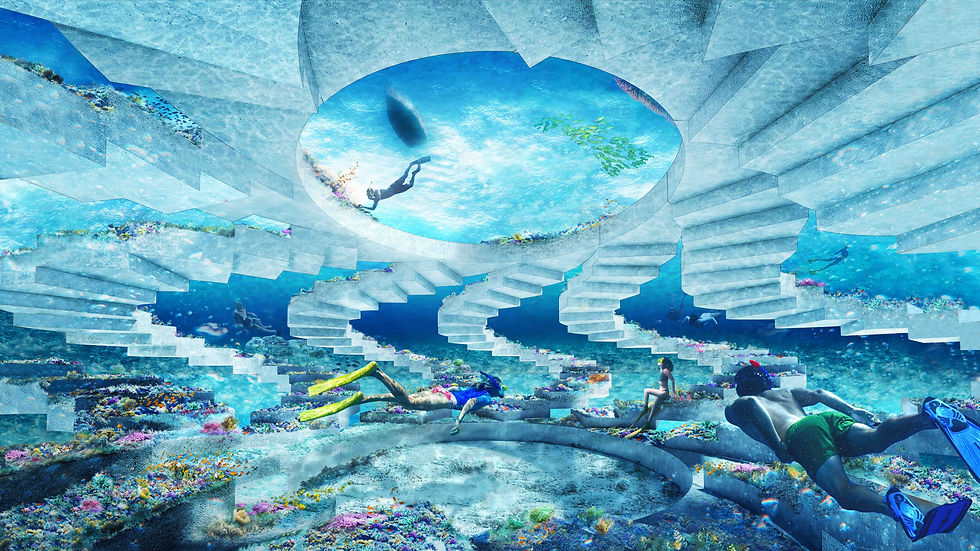The ReefLine: Pioneering Art-Driven Coral Restoration In Miami Beach
- wgclients01
- Jun 8
- 2 min read
In an ambitious fusion of ecological innovation and contemporary art, The ReefLine is emerging as a groundbreaking initiative to restore a critical stretch of the Florida Reef Tract—Earth’s third-largest coral reef system. This visionary project aims not only to foster marine biodiversity and protect coastlines but also to inspire global environmental awareness through large-scale, site-specific installations by world-renowned artists.

Funded in part by a $5 million Arts & Culture General Obligation Bond approved by Miami Beach voters in 2022, The ReefLine is a collaboration between urban planners, artists, scientists, and public agencies. Conceived by Ximena Caminos and developed with architecture firm OMA and Shohei Shigematsu, the project integrates regenerative climate technology with cultural engagement, serving as a prototype for creative coastal infrastructure worldwide.
The initiative's first underwater art installation, Concrete Coral by Argentinian artist Leandro Erlich, is slated for deployment in September 2025 off 4th Street. Comprising 22 full-scale replicas of cars cast in marine-grade concrete, the surreal underwater “traffic jam” symbolizes the tension between urbanization and nature’s resilience. These sculptures, fabricated using 3D-printed molds by Madco3D and seeded with live corals using patented Coral Lok technology, are being prepared in collaboration with the University of New Hampshire and The ReefLine’s Miami Native Coral Lab.

Marine biologist Colin Foord, who leads coral cultivation efforts, emphasizes the importance of working with resilient urban coral species: “The Miami Native Coral Lab will grow thousands of corals annually for transplanting onto ReefLine structures, making this one of the world’s largest hybrid reef restoration projects.”
Future phases, scheduled through 2026, include The Miami Reef Star by Carlos Betancourt and Alberto Latorre, and Heart of Okeanos by Petroc Sesti. These installations, like Erlich’s, are designed to double as habitat modules—offering structural features that promote coral growth and shelter marine species.
The global relevance of the initiative will be underscored at the 2025 United Nations Ocean Conference in Nice, France, where an international version of The Reef Star will be exhibited in collaboration with the UN Environment Programme, UNESCO, and others. Made from marine-safe, carbon-storing concrete and bio-based binders developed by VICAT, the sculpture channels sunlight into its core and provides textured surfaces for marine colonization—combining artistic beauty with ecological function.

The ReefLine team has also launched public engagement campaigns, including Adopt a Star and Adopt a Coral, as well as plans for a Biocultural Center in Miami Beach and an augmented reality (AR) app to digitally explore underwater artworks from land.
“This is not just an art project,” said Brandi Reddick, Executive Director of The ReefLine. “It’s a blueprint for resilience. We’re demonstrating how creativity, science, and community can come together to combat climate change and restore ecosystems in a meaningful way.”

With support from organizations such as the Knight Foundation, the Blavatnik Foundation, and the Global Fund for Coral Reefs, The ReefLine represents a scalable model of climate-positive action that blends public art, science, and policy in service of ocean preservation.

